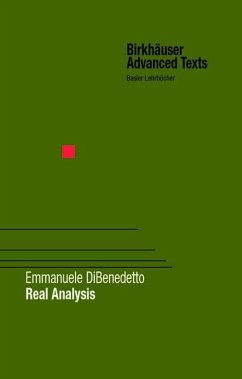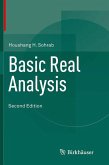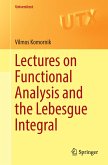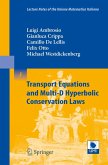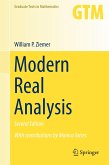This book is a self-contained introduction to real analysis assuming only basic notions on limits of sequences in ]RN, manipulations of series, their convergence criteria, advanced differential calculus, and basic algebra of sets. The passage from the setting in ]RN to abstract spaces and their topologies is gradual. Continuous reference is made to the ]RN setting, where most of the basic concepts originated. The first seven chapters contain material forming the backbone of a basic training in real analysis. The remaining two chapters are more topical, relating to maximal functions, functions of bounded mean oscillation, rearrangements, potential theory, and the theory of Sobolev functions. Even though the layout of the book is theoretical, the entire book and the last chapters in particular concern applications of mathematical analysis to models of physical phenomena through partial differential equations. The preliminaries contain a review of the notions of countable sets and related examples. We introduce some special sets, such as the Cantor set and its variants, and examine their structure. These sets will be a reference point for a number of examples and counterexamples in measure theory (Chapter II) and in the Lebesgue differentiability theory of absolute continuous functions (Chapter IV). This initial chapter also contains a brief collection of the various notions of ordering, the Hausdorff maximal principle, Zorn's lemma, the well-ordering principle, and their fundamental connections.
"The book serves as a solid building block for research in analysis, PDEs, the calculus of variations, probability theory and approximation theory; it provides an excellent foundation of real analysis." -ZENTRALBLATT MATH
"This is a very good book. It begins with the standard material, but also includes chapters dealing with distributions and weak derivatives, special topics (e.g., the Calderón-Zygmund decomposition theorem, the Marcinkiewicz interpolation theorem), and Sobolev spaces . . . The Lebesgue integral is done in Rn and compared to the integral of Riemann... abstract measure theory and the Radon--Nykodym theorem are also treated... The author weaves together standard and non-standard material. I think this book would be of value to anyone with a serious interest in analysis. It is also suitable as a textbook." -SIAM REVIEW
"Each chapter is completed by a set of exercises and problems that add new features and shed new light on the results from the main text. Bringing together, in a relatively small number of pages, important and difficult results in real analysis that are of current use in application to PDEs, Fourier and harmonic analysis, and approximation, this valuable book is of great interest to researchers working in these areas, but it can be used for advanced graduate courses in real analysis as well." -STUDIA UNIVERSITATIS BABES-BOLYAI, SERIES MATHEMATICA
"Every advanced undergraduate or beginning graduate student who would mount mathematical Parnassus must master analysis; library shelves groan with texts and monographs aimed to aid the ascent . . . The first seven chapters of DiBenedetto's book constitute a standard year-long course in measure theory and functional analysis, including the theory of distributions, so important for partial differential equations, a motivating priority for the author. Treatments of Hausdorff measure and the Kirzbraun--Pucci theorem constituteemendations to the standard itinerary. The last two chapters . . . contain more special material on rearrangements, BMO, and embedding theorems for functions in Sobolev space." -CHOICE
"DiBenedetto's writing style is quite concise. There is generally not a lot of introductory or motivational material. The theorems are well marked, and the material is well organized.... To summarize, I found DiBenedetto's book to be on par with Rudin's Real and Complex Analysis book. In my estimation, this means that it would serve as an outstanding reference book for someone already familiar with the topic, but would not be the best textbook for the typical introductory graduate course in real analysis." -MAA
"This is a textbook on the vast field of real analysis. . . Each section is rounded off by a paragraph on 'problems and complements.' It brims with requests to the reader encourging him (or her) to prove something or to try something out. . . DiBenedetto's work is a thoroughbred among the analysis books. The sheer richness in content is awesome. I can recommend it to anyone who is already pretty much familiar with the realm of real analysis and who is looking for a comprehensive monograph in a modern style." -IMN
"This is a very good book. It begins with the standard material, but also includes chapters dealing with distributions and weak derivatives, special topics (e.g., the Calderón-Zygmund decomposition theorem, the Marcinkiewicz interpolation theorem), and Sobolev spaces . . . The Lebesgue integral is done in Rn and compared to the integral of Riemann... abstract measure theory and the Radon--Nykodym theorem are also treated... The author weaves together standard and non-standard material. I think this book would be of value to anyone with a serious interest in analysis. It is also suitable as a textbook." -SIAM REVIEW
"Each chapter is completed by a set of exercises and problems that add new features and shed new light on the results from the main text. Bringing together, in a relatively small number of pages, important and difficult results in real analysis that are of current use in application to PDEs, Fourier and harmonic analysis, and approximation, this valuable book is of great interest to researchers working in these areas, but it can be used for advanced graduate courses in real analysis as well." -STUDIA UNIVERSITATIS BABES-BOLYAI, SERIES MATHEMATICA
"Every advanced undergraduate or beginning graduate student who would mount mathematical Parnassus must master analysis; library shelves groan with texts and monographs aimed to aid the ascent . . . The first seven chapters of DiBenedetto's book constitute a standard year-long course in measure theory and functional analysis, including the theory of distributions, so important for partial differential equations, a motivating priority for the author. Treatments of Hausdorff measure and the Kirzbraun--Pucci theorem constituteemendations to the standard itinerary. The last two chapters . . . contain more special material on rearrangements, BMO, and embedding theorems for functions in Sobolev space." -CHOICE
"DiBenedetto's writing style is quite concise. There is generally not a lot of introductory or motivational material. The theorems are well marked, and the material is well organized.... To summarize, I found DiBenedetto's book to be on par with Rudin's Real and Complex Analysis book. In my estimation, this means that it would serve as an outstanding reference book for someone already familiar with the topic, but would not be the best textbook for the typical introductory graduate course in real analysis." -MAA
"This is a textbook on the vast field of real analysis. . . Each section is rounded off by a paragraph on 'problems and complements.' It brims with requests to the reader encourging him (or her) to prove something or to try something out. . . DiBenedetto's work is a thoroughbred among the analysis books. The sheer richness in content is awesome. I can recommend it to anyone who is already pretty much familiar with the realm of real analysis and who is looking for a comprehensive monograph in a modern style." -IMN
"The book is a valuable, comprehensive reference source on real analysis. The first eight chapters cover core material that is part of most courses taught on the subject, followed by a collection of special topics that stay within the framework of real analysis. In addition to the content, what makes the book especially useful as a reference source is its organization. ... Summing Up: Recommended. Graduate students and faculty. This work should be used solely as a reference." (M. Bona, Choice, Vol. 54 (9), May, 2017)
"The reader can find many interesting details which serve to illuminate the diamonds of analysis. The list of references contains the main books and articles which form the modern real analysis. The book can be recommended as one of the main readings on real analysis for those who are interested in this subject and its numerous applications." (Sergei V. Rogosin, zbMATH 1353.26001, 2017)
"The reader can find many interesting details which serve to illuminate the diamonds of analysis. The list of references contains the main books and articles which form the modern real analysis. The book can be recommended as one of the main readings on real analysis for those who are interested in this subject and its numerous applications." (Sergei V. Rogosin, zbMATH 1353.26001, 2017)

